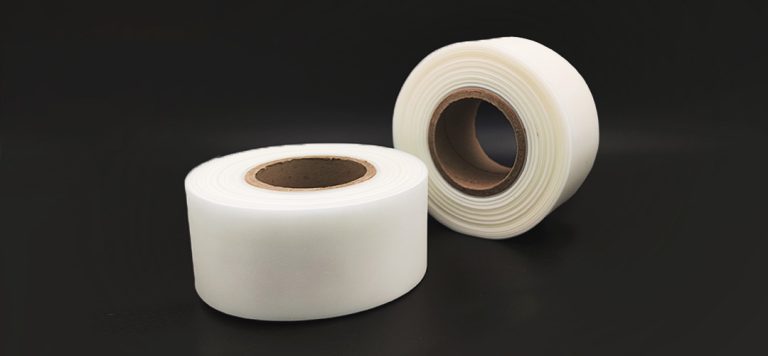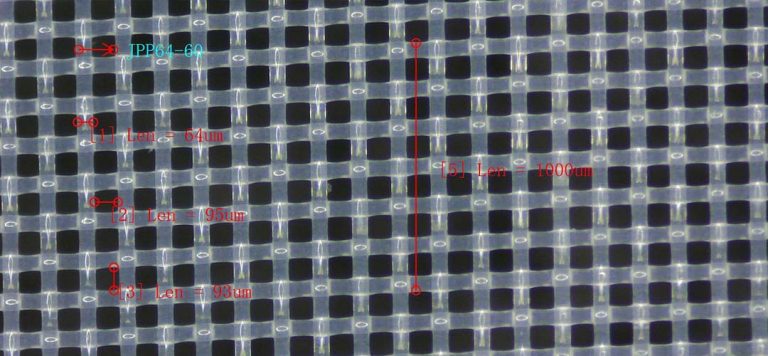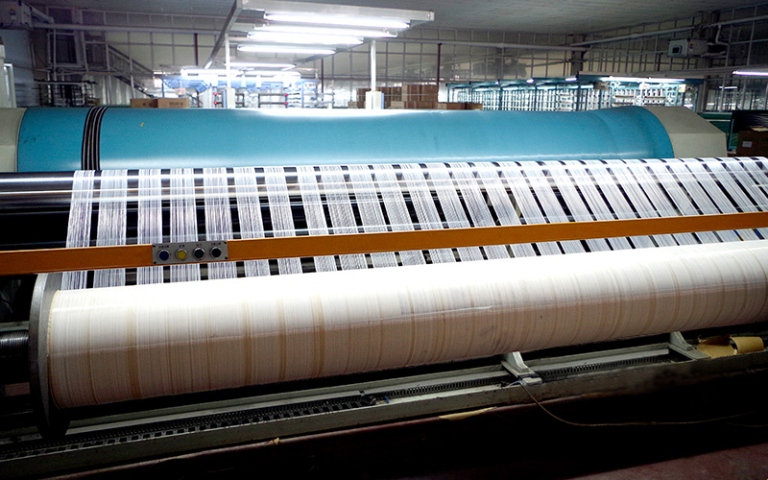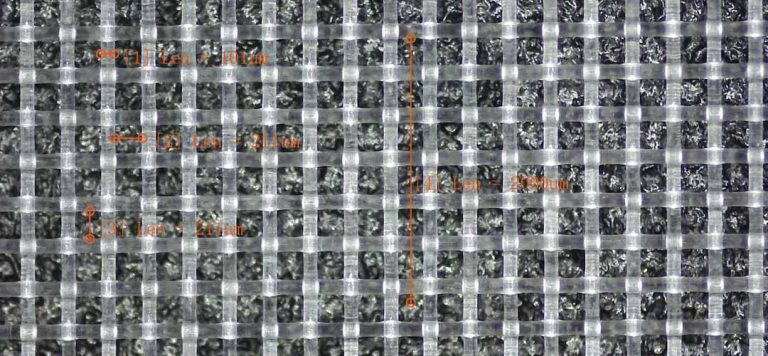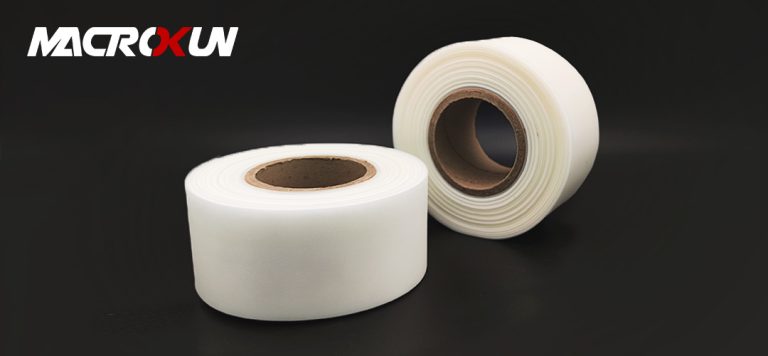Table of Contents
Applications of Nitex Mesh in Tissue Engineering
Nitex mesh is a versatile material that has found numerous applications in both research and industry. One of the key areas where Nitex mesh has shown great promise is in tissue engineering. Tissue engineering is a rapidly growing field that aims to create functional tissues and organs using a combination of cells, biomaterials, and biochemical factors. Nitex mesh has proven to be an invaluable tool in this field due to its unique properties and versatility.
One of the main advantages of using Nitex mesh in tissue engineering is its ability to provide a scaffold for cell growth. The mesh structure of Nitex allows for the easy infiltration of cells, providing a three-dimensional environment for cell attachment and proliferation. This is crucial for the development of functional tissues, as it mimics the natural extracellular matrix found in the body. Additionally, Nitex mesh can be easily customized to suit the specific needs of different tissues, making it a highly adaptable material for tissue engineering applications.
Another key benefit of using Nitex mesh in tissue engineering is its biocompatibility. Nitex is made from a biocompatible polymer that is non-toxic and non-immunogenic, making it safe for use in biological applications. This is essential for tissue engineering, as any material used in the construction of tissues must be compatible with the body’s natural processes. Nitex mesh has been extensively tested for biocompatibility and has been shown to support cell growth and tissue formation without causing any adverse effects.
In addition to its scaffold and biocompatibility properties, Nitex mesh also offers excellent mechanical strength and durability. This is important for tissue engineering applications, as the scaffold material must be able to withstand the forces exerted by cells as they grow and differentiate. Nitex mesh has been shown to maintain its structural integrity over time, making it an ideal material for long-term tissue engineering projects. Its durability also allows for the manipulation of the mesh during the tissue engineering process, such as stretching or shaping it to fit specific tissue structures.

Furthermore, Nitex mesh is highly permeable, allowing for the easy exchange of nutrients and waste products between cells and the surrounding environment. This is crucial for tissue engineering, as it ensures that cells receive the necessary nutrients for growth and function, while also allowing for the removal of waste products. The permeability of Nitex mesh can be adjusted by changing the pore size and density, making it a versatile material for different tissue engineering applications.
Overall, Nitex mesh has proven to be a valuable tool in tissue engineering due to its scaffold structure, biocompatibility, mechanical strength, durability, and permeability. Its versatility and adaptability make it an ideal material for a wide range of tissue engineering applications, from the development of simple tissue constructs to complex organ systems. As research in tissue engineering continues to advance, Nitex mesh is likely to play an increasingly important role in the creation of functional tissues and organs for medical applications.
Advantages of Using Nitex Mesh in Drug Delivery Systems
Nitex mesh is a versatile material that has found a wide range of applications in both research and industry. One of the key areas where Nitex mesh has proven to be particularly useful is in drug delivery systems. The unique properties of Nitex mesh make it an ideal material for creating drug delivery devices that can effectively release medications over a controlled period of time.
One of the main advantages of using Nitex mesh in drug delivery systems is its ability to provide sustained release of medications. The porous nature of Nitex mesh allows for the gradual diffusion of drugs through the material, ensuring a steady and consistent release of medication into the body. This is particularly important for drugs that need to be administered over an extended period of time, as it helps to maintain a therapeutic level of the medication in the body.
In addition to providing sustained release of medications, Nitex mesh also offers excellent biocompatibility. This means that the material is well-tolerated by the body and does not elicit an immune response or cause any adverse reactions. This is crucial for drug delivery systems, as it ensures that the device can be safely implanted in the body without causing any harm to the patient.

Another advantage of using Nitex mesh in drug delivery systems is its flexibility and versatility. Nitex mesh can be easily customized to suit the specific requirements of different drugs and delivery systems. It can be cut into various shapes and sizes, allowing for the creation of devices that are tailored to the needs of individual patients. This flexibility makes Nitex mesh an ideal material for creating personalized drug delivery systems that can deliver the right dose of medication to the right place at the right time.
Furthermore, Nitex mesh is also highly durable and resistant to degradation. This means that drug delivery devices made from Nitex mesh can withstand the harsh conditions inside the body and continue to function effectively for an extended period of time. This durability is essential for ensuring the long-term efficacy of drug delivery systems and reducing the need for frequent replacements or maintenance.
Overall, the advantages of using Nitex mesh in drug delivery systems are clear. Its ability to provide sustained release of medications, excellent biocompatibility, flexibility, and durability make it an ideal material for creating effective and reliable drug delivery devices. Researchers and industry professionals alike continue to explore the potential of Nitex mesh in drug delivery systems, and its versatility and effectiveness make it a valuable tool in the field of pharmaceutical research and development.
Innovations in Nitex Mesh for Filtration and Separation Processes
Nitex mesh, a versatile material made from monofilament fibers, has found a wide range of applications in research and industry. Its unique properties make it an ideal choice for filtration and separation processes, where precision and efficiency are paramount. In this article, we will explore the innovations in Nitex mesh that have revolutionized these processes, making them more effective and reliable.
One of the key advantages of Nitex mesh is its uniform pore size distribution, which allows for precise control over the filtration and separation process. This uniformity ensures that particles of a specific size are captured while allowing smaller particles to pass through. This level of control is essential in industries such as pharmaceuticals, where the purity of the final product is critical.
In recent years, researchers have developed new techniques to enhance the performance of Nitex mesh in filtration and separation processes. One such innovation is the use of surface modifications to tailor the properties of the mesh to specific applications. By altering the surface chemistry of the mesh, researchers can improve its wettability, adhesion, and selectivity, making it more effective at capturing target particles.
Another area of innovation in Nitex mesh is the development of composite materials that combine the properties of the mesh with other materials to create hybrid structures. These composites can offer enhanced mechanical strength, chemical resistance, and thermal stability, making them suitable for a wider range of applications. For example, Nitex mesh can be combined with activated carbon to create a filter that can remove both particulate matter and organic contaminants from water.
Advances in manufacturing techniques have also contributed to the versatility of Nitex mesh in filtration and separation processes. By using advanced weaving and knitting technologies, manufacturers can produce mesh with finer pore sizes, higher porosity, and greater durability. These improvements have made Nitex mesh more reliable and cost-effective, allowing industries to achieve higher levels of efficiency and productivity.
In addition to its applications in industry, Nitex mesh has also found use in research laboratories for a variety of scientific experiments. Its high chemical resistance and inertness make it an ideal material for studying the behavior of particles in fluids, as well as for conducting filtration tests on a small scale. Researchers can use Nitex mesh to simulate real-world filtration processes and optimize their experimental conditions before scaling up to industrial applications.
Overall, the versatility of Nitex mesh in research and industry is a testament to its unique properties and the ongoing innovations in its development. From surface modifications to composite materials to advanced manufacturing techniques, researchers and manufacturers continue to push the boundaries of what is possible with this remarkable material. As the demand for more efficient and reliable filtration and separation processes grows, Nitex mesh will undoubtedly play a crucial role in meeting these challenges and driving further advancements in the field.
Exploring the Potential of Nitex Mesh in Biomedical Implants
Exploring the Versatility of Nitex Mesh in Research and Industry
Nitex mesh, a type of porous material made from biocompatible polymers, has gained significant attention in various fields of research and industry. Its unique properties make it an ideal choice for a wide range of applications, including biomedical implants. In this section, we will delve into the potential of Nitex mesh in the field of biomedical implants and explore how it can revolutionize the way we approach medical treatments.
One of the key advantages of Nitex mesh in biomedical implants is its ability to promote tissue regeneration. The porous structure of the mesh allows for the infiltration of cells and nutrients, facilitating the growth of new tissue. This is particularly beneficial in cases where damaged or diseased tissue needs to be replaced. By providing a scaffold for tissue growth, Nitex mesh offers a promising solution for patients in need of organ or tissue transplants.
Furthermore, Nitex mesh can be tailored to meet specific requirements, making it highly versatile in the field of biomedical implants. The pore size and distribution can be customized to accommodate different types of cells and tissues. This level of customization allows for precise control over the implant’s functionality and compatibility with the surrounding tissue. Whether it is for bone regeneration, cartilage repair, or vascular grafts, Nitex mesh can be designed to suit the specific needs of each patient.
In addition to its regenerative properties, Nitex mesh also exhibits excellent biocompatibility. The material is non-toxic and does not elicit an immune response, minimizing the risk of rejection or adverse reactions. This is crucial in the field of biomedical implants, as it ensures the long-term success of the implant and reduces the need for additional surgeries or interventions. With Nitex mesh, patients can have peace of mind knowing that their implants are not only effective but also safe.
Another advantage of Nitex mesh is its mechanical strength. Despite its porous nature, the material retains its structural integrity, providing support and stability to the surrounding tissue. This is particularly important in load-bearing applications, such as orthopedic implants. Nitex mesh can withstand the forces exerted on it, ensuring that the implant remains intact and functional over time. This durability is essential for patients who rely on implants for their daily activities and quality of life.
Moreover, Nitex mesh offers a high degree of permeability, allowing for efficient exchange of gases and fluids. This is crucial in applications such as artificial organs or drug delivery systems, where proper oxygenation and nutrient supply are essential. The porous structure of Nitex mesh enables the diffusion of substances, ensuring that the implanted device functions optimally. This permeability also facilitates the removal of waste products, promoting overall tissue health and preventing complications.
In conclusion, Nitex mesh holds immense potential in the field of biomedical implants. Its ability to promote tissue regeneration, customizable properties, biocompatibility, mechanical strength, and permeability make it an ideal choice for a wide range of applications. As researchers and industry professionals continue to explore the possibilities of Nitex mesh, we can expect to see groundbreaking advancements in the field of medical treatments. With its versatility and numerous advantages, Nitex mesh is poised to revolutionize the way we approach biomedical implants and improve the lives of countless patients worldwide.
Sustainability and Environmental Impact of Nitex Mesh in Industry
Nitex mesh is a versatile material that has found applications in a wide range of industries, from healthcare to environmental science. One of the key advantages of Nitex mesh is its sustainability and minimal environmental impact, making it an attractive option for companies looking to reduce their carbon footprint.
In the healthcare industry, Nitex mesh is commonly used in surgical procedures, such as hernia repairs and wound dressings. Its biocompatibility and ability to promote tissue regeneration make it an ideal material for medical applications. Additionally, Nitex mesh is durable and can be sterilized, making it a cost-effective option for healthcare providers.
In the field of environmental science, Nitex mesh is used in research projects to study aquatic ecosystems. Its fine mesh size allows researchers to collect samples of plankton and other small organisms without harming them. This is crucial for studying the impact of pollution and climate change on marine life, as it provides valuable data for conservation efforts.
Furthermore, Nitex mesh is also used in the agriculture industry for crop protection and pest control. Its lightweight and flexible nature make it easy to install over crops to prevent damage from insects and birds. This reduces the need for harmful pesticides, promoting sustainable farming practices and protecting the environment.
Another key benefit of Nitex mesh is its recyclability. Unlike traditional plastic materials, Nitex mesh can be easily recycled and repurposed for other applications. This reduces waste and helps companies meet their sustainability goals.

Overall, Nitex mesh offers a sustainable and environmentally friendly alternative to traditional materials in a variety of industries. Its versatility and durability make it a valuable asset for companies looking to reduce their environmental impact and promote sustainable practices. Whether used in healthcare, environmental science, or agriculture, Nitex mesh is a reliable and cost-effective solution for a wide range of applications.

